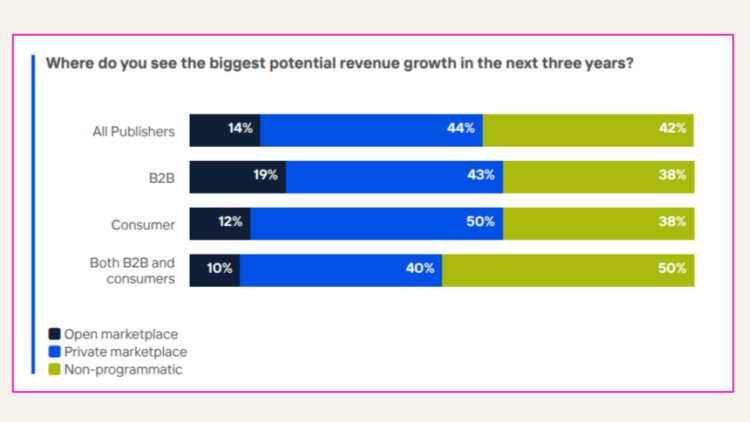There’s never a dull moment in the world of programmatic media and ad tech – which is probably why we love working in this space. In this blog we’re looking at what brands should consider when selecting the right suppliers to partner with. And we’re focusing on two key factors: performance and effectiveness.
Every week we hear exciting news in the ad tech sector, with new vendors entering the market, merging together or even growing their capabilities in new areas to drive marketing effectiveness. However it is an industry that is not without its troubles. This has been recently publicised with tech companies shrinking or even closing down operations. It’s safe to say that keeping your ear to the ground is a sensible action to take when working within the digital media world. And as always, we’re happy to help…
Supply-side platforms (or SSPs) originally started off as the technology used to coordinate and manage the supply of ad inventory from publishers’ sites. But their position in the ecosystem has evolved further into the buy-side. Their relationship with brands (and the agencies who manage their media buying) have developed into collaborative partnerships, curating an inventory pool of premium sites and environments for brands. This has been defined and is now widely known as a Curated Marketplace. However, after a rough economic period we have seen significant changes to SSPs, with many laying off staff to calm the tide, or even completely shut down their SSP business, in Yahoo’s case. Google’s sell-side business is also under intense pressure in the US after the DOJ announced it’s suing the tech giant for monopolistic practices, which could see wholesale changes if action is taken. Like we said: never a dull moment.
Why is this happening? Why now?
Many of these cases are a ripple effect from the unstable market events of the pandemic and a looming recession. However, another big contributor is the increased focus on transparency, which has brought the need for Supply Path Optimisation (SPO) to light. On the buyer-side, a closer lens has been put on the efficiency of supply paths to publisher inventory. Advertisers are also looking beyond just performance and focusing on the environmental & societal impact they are having on the world.
In this complex environment, are you ensuring to analyse your media buying? Do you really know where your ads are going, or what value they’re providing? These are not easy questions to ask yourself – because the answers can be even harder.
But not to worry. We’ve got you covered with a few expert tips to consider when planning and partnering with supply-side provider for an effective performance strategy across your programmatic media channels.
1. Go for Premium over open exchange
Recent research from the Association of Online Publishers (AOP) found that 86% of publisher revenue will come from either direct or private marketplace deals, not through the open exchange. This already rings true and is a trend we believe will stay. Premium is the way forward and should be an essential part of your digital strategy. Be it at a brand awareness level, reaching your core audiences on the most popular and relevant online publishers. Or if it’s for a performance campaign, precision targeting of your audiences on retail media marketplaces. In both scenarios, showing your ads against high quality media content can elevate your media’s effectiveness and is worth the extra initial outlay.

2. Make a Conscious effort to be sustainable
We’re probably (hopefully) preaching to the choir – but climate change has hit a crisis point. Carbon emissions are rising and according to the IPCCs latest report “unless there are immediate, rapid and large-scale reductions in greenhouse gas emissions, limiting warming to close to 1.5°C or even 2°C will be beyond reach”.
Like it or not, this is a media problem. Advertising contributes to some great behavioural change in society, but its downfall is the high energy usage which our industry must consume in order to make that change. It’s incumbent upon all participants in the advertising ecosystem to consider the impact ad technology has on the environment. Ad servers which power the process of buying and selling ad space online is a high energy source. Many supply-side vendors have been working on getting ‘their house in order’ by moving to sustainable energy sources or even reducing the number of servers required. These contribute to a more sustainable ecosystem, and as an agency who is very much committed to Ad Net Zero, we work alongside those partners who share the same ambition to combat the climate crisis we are approaching at a rapid pace.
Generally speaking, higher quality media buying is more sustainable through less waste and better-quality targeting data. It’s another reason we advocate for putting premium inventory into our media strategies. Not only because it performs much better, but it is also more sustainable.
3. In programmatic media, context is king
The power of contextual is real. If you didn’t know this already there are many studies that show the positive neurological impact of placing your brand against relevant content. This is because attention and engagement is high in the moment where audiences are reading their favorite online content from quality journalists or streaming a binge-worthy TV series they’ve found themselves glued to.
We work alongside publishers and ad exchanges which deliver contextual targeting at pinpoint accuracy. Cutting edge ad tech is driving effectiveness in this area and AI-powered targeting delivers this in real-time, finding relevant content that’s being generated at a speed we’ve never seen before. Finding a supply partner who can deliver this kind of targeting across some of the best sites and apps is a powerful combination. Brands should make a conscious effort to run campaigns with a cleaner path to publishers’ ad space, without the compromise of performance. Overall this creates a unified marketplace between buy and sell-sides of programmatic, where marketing budget is directed to the most trusted editorial content around.
If you can nail down these three key areas, you will see a better performance of your campaigns while contributing to the fundamental changes needed in the marketing industry.
And if you are still stuck on how to pick the right programmatic media partners for your strategy -then we are here to help…





